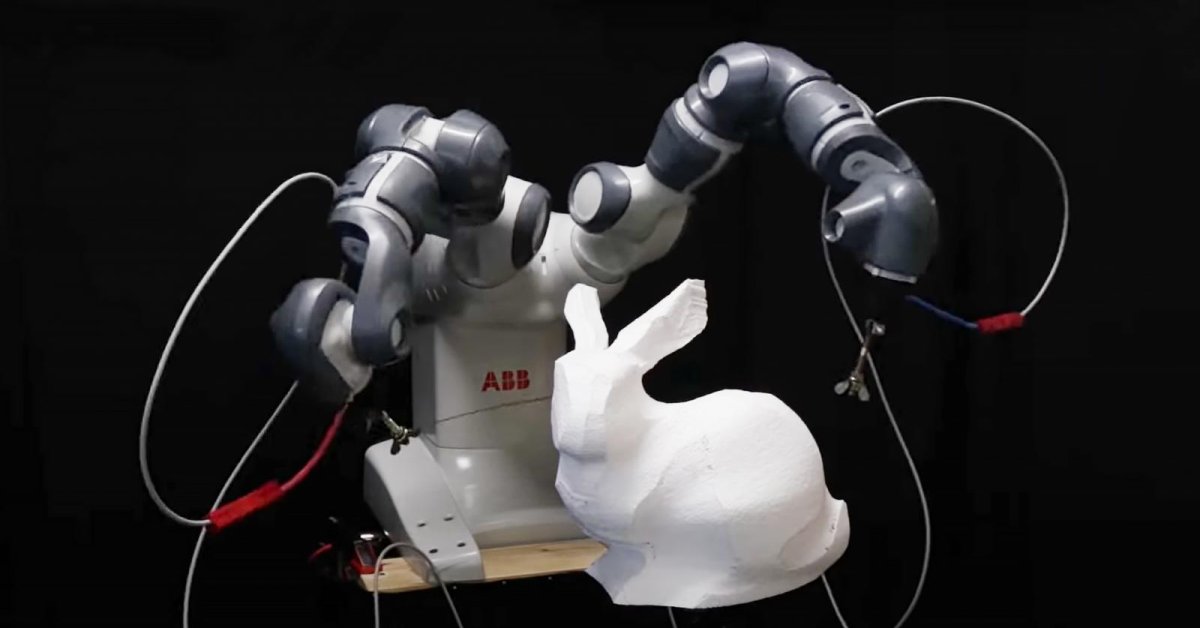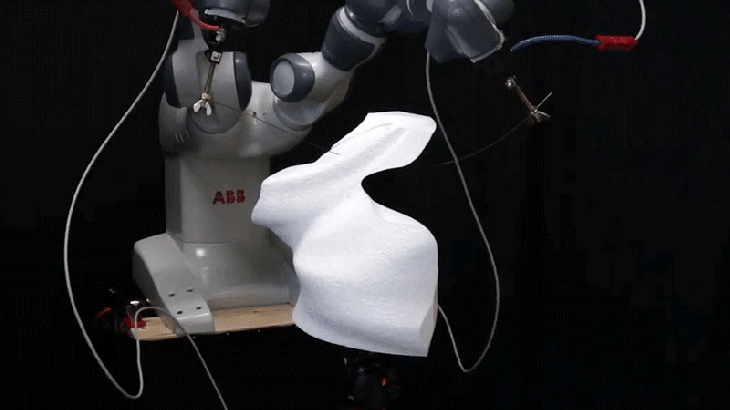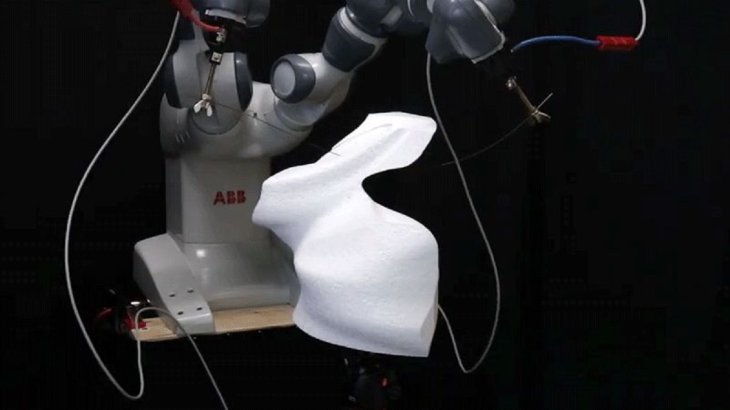Watch These Robot Arms Carve A Bunny Using Hot Wire To Cut Through Foam
Dhir Acharya - May 29, 2020

Robots are getting better and better at doing things that only humans could in the past. These robot arms have created a bunny sculpture by slicing foam.
- Cafe In Tokyo With Robot Waiters Controlled By Disabled Staff
- This $333,000 Robot Kitchen Can Cook 5,000 Recipes From Scratch
- Experts Build A Robot Hand That Smells Like A Woman For Lonely Men To Hold
Robots are getting better and better at doing things that only humans could in the past. And they are not only developing in engineering or other technical areas, but they are also starting to create artworks. In one of the latest examples, a pair of robot arms created sculptures with hot wire carving. The robot arms were able to recreate the most difficult curves on a 3D model by coordinating their movements through bending, warping a metal rod to slice through foam.

Conventionally, hot wire cutters work with straight wires that can only make straight cuts in polystyrene foam. To recreate curves, crude contours need to be sliced first, then refined and smoothed with rasps, files, and other tools. Robots can help speed up this process, but researchers at the Computational Robotics Lab, Department of Computer Science at ETH Zurich, have taken this approach a step further when they taught a pair of robot arms to coordinate to improve the carving process.

Dubbed YuMi IRB 14000, this robot features two arms, each of which can move in 7 degrees of freedom. The grippers on the arms hold onto the ends of an inextensible elastic metal rod, meaning the rod can be warped and bent but not stretched. This is important because to make the idea work, the researchers had to calculate and model the wire’s shape exactly as the robot rams move and unplanned stretching will prevent them from predicting the shape.
There’s another problem, the rod can be warped and bent to a certain degree only or it will be damaged. Therefore, the research team had to figure out the limitations and plan the cuts within the boundaries. As you can see from the video, it’s not simple to recreate the 3D test model using this robot. The researchers had to make tools for analyzing the model then calculate a series of sweeping cuts to remove pieces of foam in a pre-determined sequence.
While planning the sequence, the researchers had to consider the model’s complexity so that one cut won’t affect another detail while carving. Also, other materials like wood, stone, or metal will pose another challenge to this approach. But in the meantime, let’s just enjoy the work of these robot arms.
>>> [Watch] Robot Dog Herds Sheep With Ease, No Job Left For Humans Soon?
Featured Stories

Features - Jul 01, 2025
What Are The Fastest Passenger Vehicles Ever Created?

Features - Jun 25, 2025
Japan Hydrogen Breakthrough: Scientists Crack the Clean Energy Code with...

ICT News - Jun 25, 2025
AI Intimidation Tactics: CEOs Turn Flawed Technology Into Employee Fear Machine

Review - Jun 25, 2025
Windows 11 Problems: Is Microsoft's "Best" OS Actually Getting Worse?

Features - Jun 22, 2025
Telegram Founder Pavel Durov Plans to Split $14 Billion Fortune Among 106 Children

ICT News - Jun 22, 2025
Neuralink Telepathy Chip Enables Quadriplegic Rob Greiner to Control Games with...

Features - Jun 21, 2025
This Over $100 Bottle Has Nothing But Fresh Air Inside

Features - Jun 18, 2025
Best Mobile VPN Apps for Gaming 2025: Complete Guide

Features - Jun 18, 2025
A Math Formula Tells Us How Long Everything Will Live

Features - Jun 16, 2025
Comments
Sort by Newest | Popular